Hot New Neighborhoods for Dining in Philadelphia and Pittsburgh
These one-time industrial areas are now trending for their restaurant offerings
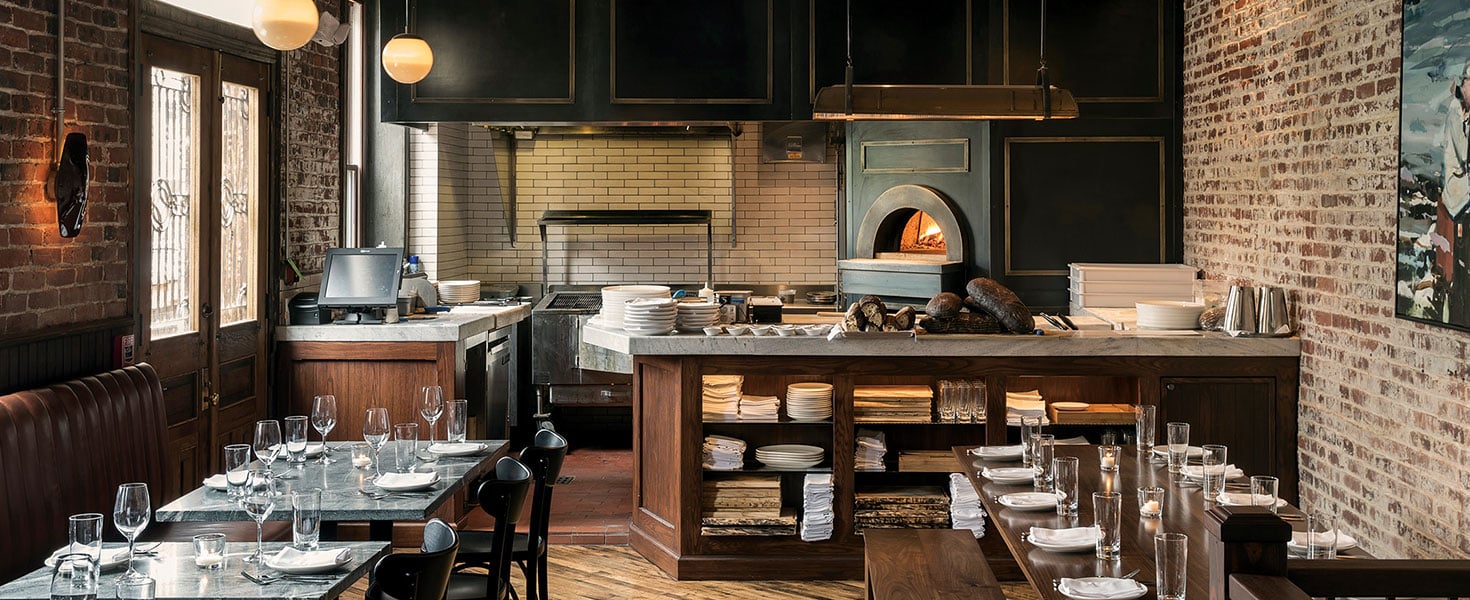
In Philadelphia’s Fishtown neighborhood, the factories that once hummed with heavy machinery are now generating a different kind of buzz with some of Philly’s most-talked about restaurants, cafés and bars. Across the state in Pittsburgh, a similar transformation has taken place in the Lawrenceville neighborhood. Once the home of the historic Allegheny Arsenal, it’s now known for its vibrant food and drink scene. Read on for highlights of these culinary destinations.
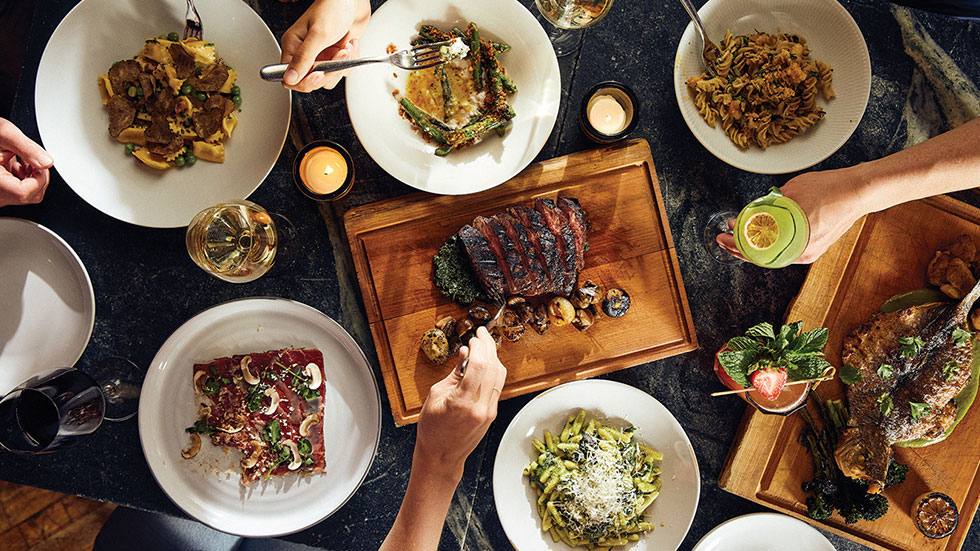 Appetizing choices from Wm. Mulherin’s Sons. Photo By Kirk Robert Chambers
Appetizing choices from Wm. Mulherin’s Sons. Photo By Kirk Robert Chambers
PHILADELPHIA’S FRESH FEED: FISHTOWN
Dating to the Colonial era, this river ward earned its name as a hub for the local shad fishing industry and eventually became industrialized. As factories shuttered in the mid- to late 20th century, the area’s fortunes declined. Fifteen years ago, artists, entrepreneurs and developers drawn by cheap rents and empty storefronts started to invest in Fishtown, attracting a critical mass of younger residents and injecting new life into Frankford Avenue, the commercial spine of this northeast Center City neighborhood.
Since then, a continuous wave of restaurants, bars and boutiques has taken over old warehouses, factories and long-abandoned buildings. As a sign of Fishtown’s growing reputation, bakery-café Cake Life has made a trio of appearances on Food Network’s Cupcake Wars, including one win. The women-owned bakery has also made a birthday cake for Beyoncé—twice.
Even the pizza generates headlines here. Pizzeria Beddia made national news several years ago when Bon Appétit deemed its pies the best in America. You can judge these gloriously charred thin-crust offerings yourself at this skylit restaurant tucked away on a small street near Frankford Avenue.
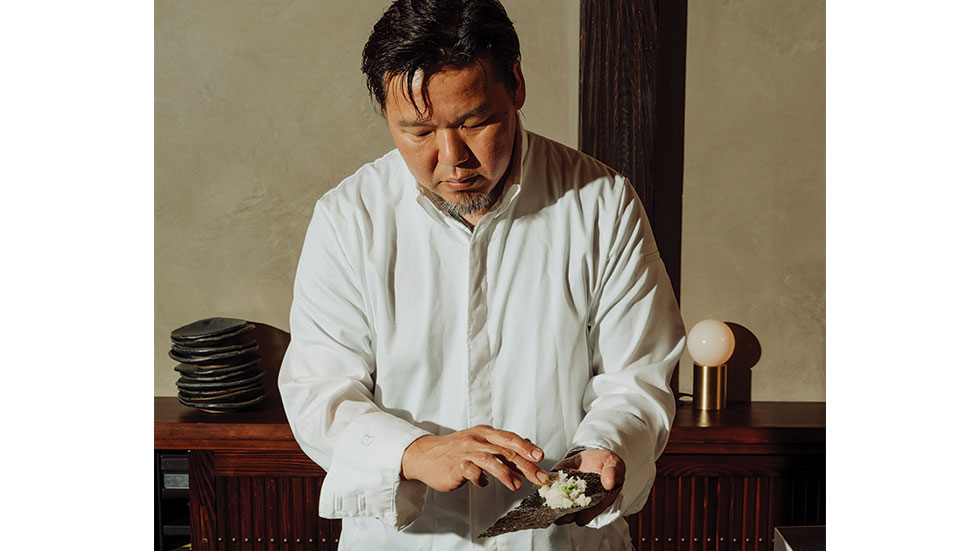 Hand rolling sushi at Hiroki in Fishtown. Photo by Cole Wilson
Hand rolling sushi at Hiroki in Fishtown. Photo by Cole Wilson
Many of Fishtown’s restaurants occupy unique reimagined spaces. Wm. Mulherin’s Sons, located in a long-closed whiskey distillery under the elevated train tracks, has been reborn as a moody and romantic Italian restaurant, bar and boutique hotel. Come here for the wood-fired-oven pizzas, pasta dishes—like fazzoletti topped with harissa-braised lamb ragù—and larger plates, like whole branzino in piri piri sauce.
Nearby, the flagship location of La Colombe, a national coffee roaster and café chain, inhabits a former warehouse that’s now a soaring space featuring a mural by Philadelphia native son Steve Powers, aka ESPO (Exterior Surface Painting Outreach). Another former industrial space turned boisterous destination is Frankford Hall, an indoor-outdoor German-style biergarten owned by Philly’s über restaurateur Stephen Starr and known for its giant soft pretzels, wurst sampler, and extensive list of German and American craft beers.
For more refined experiences, make reservations at Suraya or Hiroki. Brunch or dinner at Suraya surveys the flavors of the Levant (Lebanon, Turkey, Palestine and Israel) in an evocative setting with bright colors, tilework and custom light fixtures. Hiroki, named for executive chef Hiroki Fukiyama, who trained under sushi master Masaharu Morimoto, offers a multicourse, seasonal omakase, or chef’s tasting menu, that includes zensai (appetizers), sushi courses and dessert.
One of the newer hot spots is Starr’s LMNO, a sprawling, upscale Mexican restaurant with its own book shop filled with art and photography titles, plus one of the city’s nicest patios. The menu lists a range of tacos, ceviches and tostadas with modern twists as well as dishes cooked on a live-fire grill.
Kalaya, a two-time James Beard Award nominee and Esquire’s 2020 Restaurant of the Year, is relocating from a modest storefront in the city’s Bella Vista neighborhood to a splashier 140-seat location in yet another former industrial space. At the new Fishtown location, which was scheduled (at press time) to open in late fall, Kalaya features authentic Southern Thai food inspired by recipes from chef-partner Chutatip “Nok” Suntaranon’s mother, along with a new menu of cocktails, beer and wine.
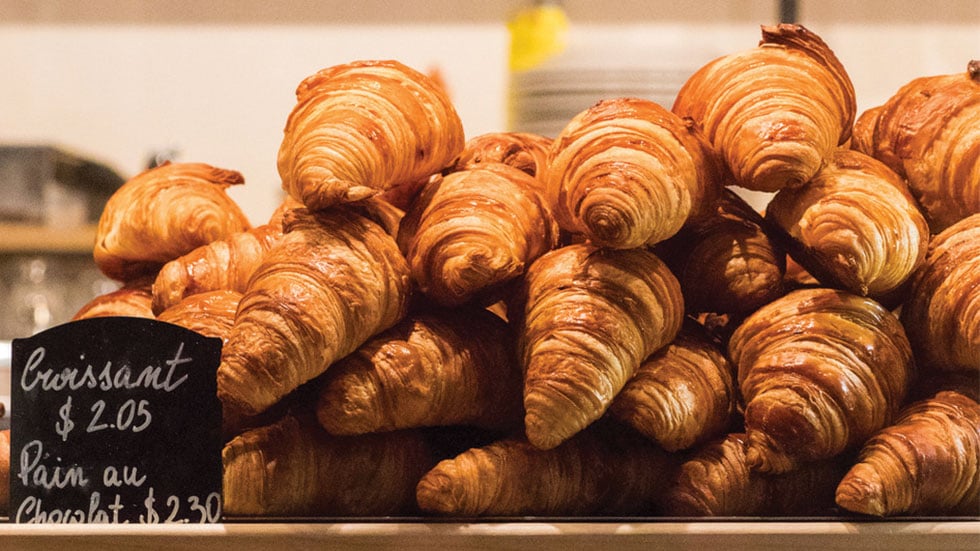 Croissants from La Gourmandine in Lawrenceville. Photo by Tom O’connor
Croissants from La Gourmandine in Lawrenceville. Photo by Tom O’connor
PITTSBURGH’S PALATE-PLEASER: LAWRENCEVILLE
One of Pittsburgh’s oldest neighborhoods, located northeast of downtown, Lawrenceville dates to the early 19th century and takes its name from Captain Jacob Lawrence, a veteran of the War of 1812. At that time, the neighborhood housed the Allegheny Arsenal, which later provided munitions during the Civil War. Over the next century, Lawrenceville became known for its ironworks. By the end of the 20th century, as industry left, the neighborhood began to suffer. Fast-forward to the 2009 opening of the UPMC Children’s Hospital, which helped usher in a rebirth for Lawrenceville.
Today, the neighborhood’s main artery, Butler Street, is home to restaurants, bars, cafés and independent shops, many in restored period buildings. Occupying an early 20th-century building that once housed a brass foundry and, later, a funeral home, The Abbey features original wood-carved ceilings and stained-glass windows salvaged from shuttered local churches.
It makes for an atmospheric spot, whether you’re sipping the house Manhattan—made with Dickel rye, Carpano Antica sweet vermouth and Luxardo cherry—in the Vesper Room, or refueling with a juicy burger, a brisket-short rib patty on house-baked challah. During warm weather, hang out in The Abbey’s expansive courtyard.
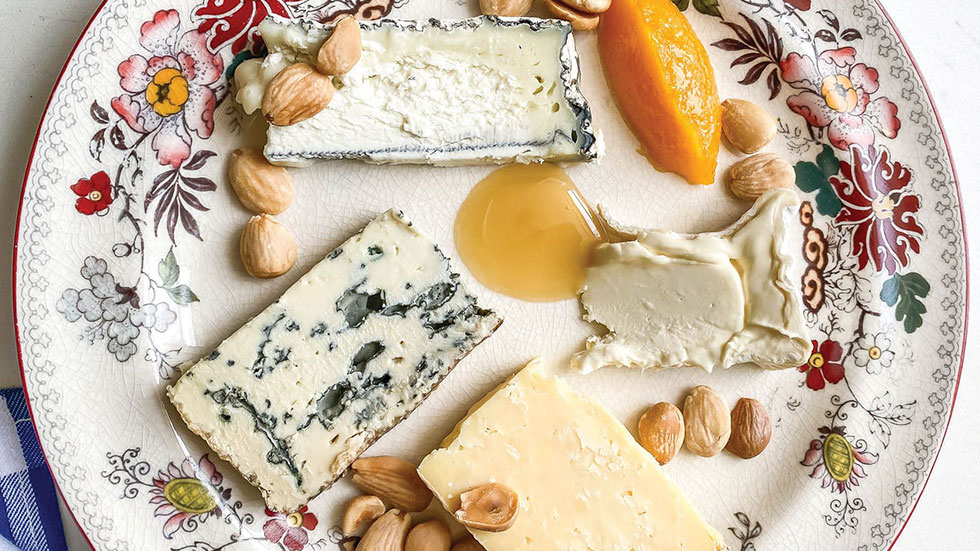 Cheese plate and mussels (inset below) from Lawrenceville’s Poulet Bleu. Courtesy of Poulet Bleu
Cheese plate and mussels (inset below) from Lawrenceville’s Poulet Bleu. Courtesy of Poulet Bleu
Whenever you hit Lawrenceville, you will find plenty of sweet rewards. La Gourmandine turns out close-your-eyes-and-you’ll-think-you’re-in-Paris versions of flaky croissant, pain au chocolat and other viennoiserie and pastries. At The Butterwood Bake Consortium, a bakery-café that stays open until 11 p.m., the rotating cake by the slice might be something like Earl Grey with raspberry buttercream, while other treats include a classic brown-butter brownie and a vegan tea cake—all made with organic and locally sourced ingredients.
For dinner, the options roam the culinary map. Poulet Bleu, for example, transports you to a modern French farmhouse thanks to its blue-and-white color scheme and touches of copper, zinc and pewter. The open kitchen covers the classics, including steak frites, escargot with garlic butter, and mussels with saffron, vermouth, Dijon and confit tomato. Walk next door for a quick trip to the Basque region of Spain at Morcilla, named a best new restaurant by Bon Appétit in 2016. The family-style menu is all about pintxos, the Northern Spain version of tapas. Wash it all down with a glass of sangria or Spanish sherry.
Continue exploring a world of cuisine by strolling a few blocks away to Umami, a Japanese-style izakaya, or pub. The vibe here is industrial chic, while the menu presents some of Japan’s greatest hits: sushi, ramen and robatayaki (skewers).
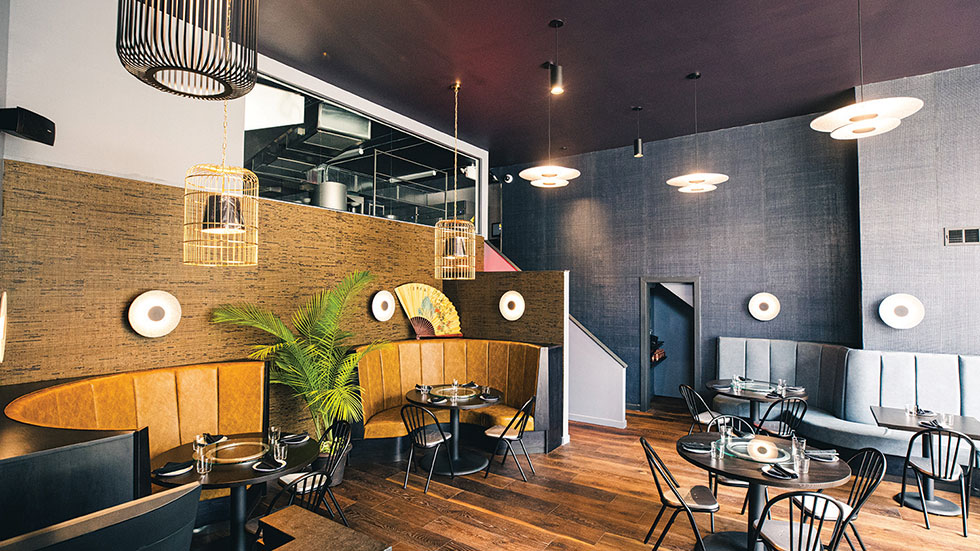 The Parlor Dim Sum. Courtesy of Parlor Dim Sum
The Parlor Dim Sum. Courtesy of Parlor Dim Sum
With his latest restaurant, Umami co-owner Roger Li honors his Cantonese roots. At The Parlor Dim Sum, you’ll find dishes like fried shrimp balls with water chestnuts and steamed rice noodle rolls filled with pork, shrimp or Chinese broccoli.
Fans of plant-based cooking will want to check out Apteka, which prepares vegan riffs on classic Central European foods. Named to The New York Times 50 best restaurants of 2022, this airy spot offers its own takes on familiar pierogies, borscht and schnitzel.
Whether in Fishtown or Lawrenceville, the tradition of a strong work ethic lives on through the craft of fine food and drink.
